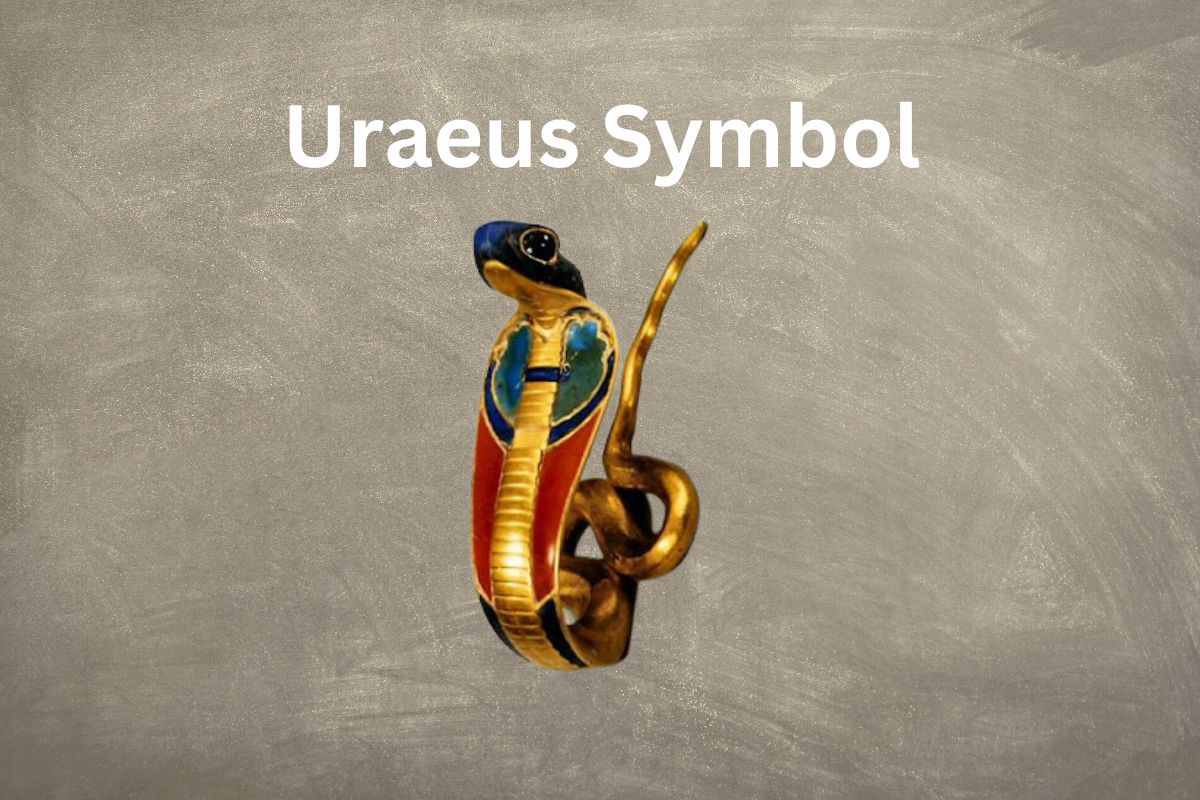The Uraeus is an Egyptian symbol depicting a rising cobra with a glowing hood. The cobra represents the kingdom of Lower Egypt, the Sun God, the kings and their families, and several gods and deities. Considered the symbol of protection, it guards the underworld gates, chases away royal enemies, and guides the dead pharaohs on their underworld journey. Uraeus is one of the oldest symbols of Egypt.
What Does Uraeus Symbolize?
Uraeus is the symbol of sovereignty, authority, royalty, and supremacy. Although the Uraeus symbol is Egyptian, the term uraeus is Greek – meaning on its tail. The Uraeus was known as Iaret in ancient Egypt and was associated with the ancient Egyptian goddess Wadjet.

Uraeus Meaning
To understand the meaning of Uraeus properly, you need to know about Goddesses Wadjet and Nekhbet.
The Goddess Wadjet
Wadjet, as the serpent goddess, was typically portrayed as a cobra. She was the patron goddess of Lower Egypt, or today’s northern Egypt, at the Nile’s delta for a long time. Her cult existed in the Nile Delta city of Per-Wadjet, later renamed Buto by the Greeks.
Wadjet’s symbol, the Iaret or Uraeus, was worn as a head ornament by Lower Egypt’s pharaohs at the time as a protector goddess. Later, when Lower Egypt merged with Upper Egypt in 2686 BCE, Wadjet’s symbolic head ornaments began to be used alongside those of the vulture goddess Nekhbet (Patron Goddess of Upper Egypt).
Nekhbet
The white vulture symbol of Nekhbet, like Wedjet’s Uraeus, was worn as a head ornament in Upper Egypt. As a result, the Egyptian Pharaohs’ new head ornamentation included cobra and white vulture heads, with the cobra’s body and neck entangled.
The goddesses became known as the nebty, or The Two Goddesses, when they joined forces. The unification of the two religious cults in this manner was a remarkable moment in Egyptian history, as it helped bring the two kingdoms together.
Who Wore the Uraeus?
Pharaohs wore the Uraeus on crowns. The use of the Uraeus on these pharaonic headdresses showed that the pharaoh was distinct from the other inhabitants of Egypt. Because the goddess Wadjet was the god Ra’s right eye, her presence above a pharaoh’s eyes served as an animal’s third eye and indicated that Ra was always by the pharaoh’s side.
What is the Uraeus Symbolism?
Uraeus, the scepter of the patron goddess of Egypt, has a straightforward meaning: royalty, sovereignty, divine authority, and supremacy.
Snakes are rarely seen as symbols of power in modern Western culture, which may lead to a disconnect with the symbolism of Uraeus. However, this symbol does not represent just any snake – it means the king cobra.
The Egyptians believed that Wadjet’s symbol protected the pharaoh. The goddess was said to spit fire through the Uraeus at those who threatened the pharaoh. The Uraeus is among the earliest symbols known to historians as a hieroglyph and an Egyptian symbol. This is because Wadjet precedes most other recognized Egyptian deities.
The Uraeus was extensively used in Egyptian and subsequent writing in various ways. It has been used to represent priestesses and deities like the goddesses Menhit and Isis.
The Uraeus was also used to describe the king in the story on the Rosetta Stone. This hieroglyph also represented shrines and other royal or divine structures.

The Legacy of Uraeus
As the cult of the sun god Ra grew in Egypt, pharaohs came to be regarded as earthly manifestations of Ra. The Uraeus has been used as a royal headdress since then. The two cobras in the Eye of Ra symbol are considered Uraei (or Uraeuses).
Later, Egyptian deities like Set and Horus were depicted with the Uraeus sign on their heads, making Wadjet the “Goddess of a God.” Later, Egyptian mythology replaced Wadjet’s cult with cults of other deities who integrated the Uraeus within their myths.
The Uraeus became connected with Egypt’s new patron goddess, Isis. She was said to have created the first Uraeus out of dirt and the sun god’s saliva and then used the sign to acquire the crown of Egypt for Osiris.
If you’ve found this article helpful, check out this post on the Anubis symbol.

